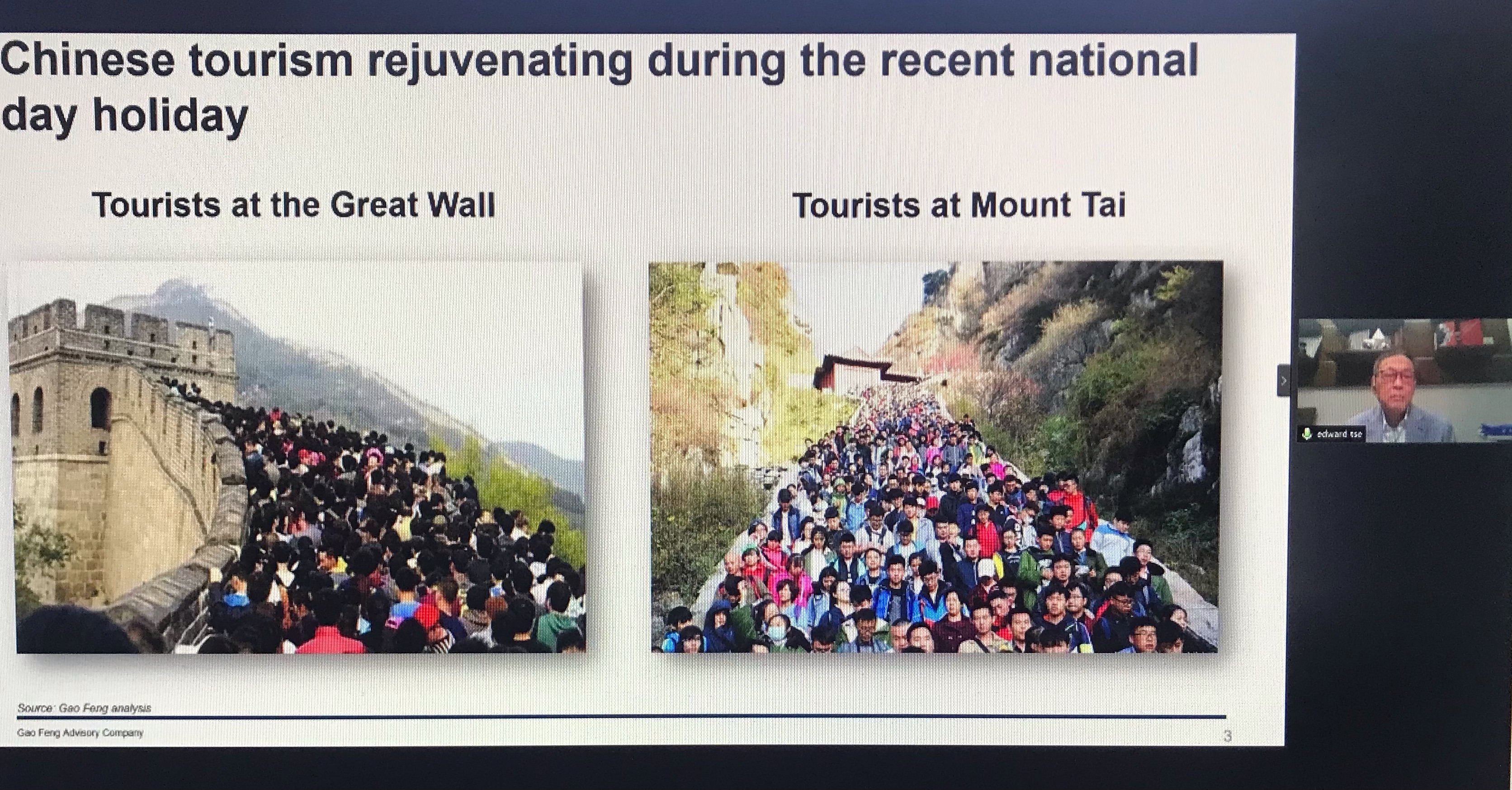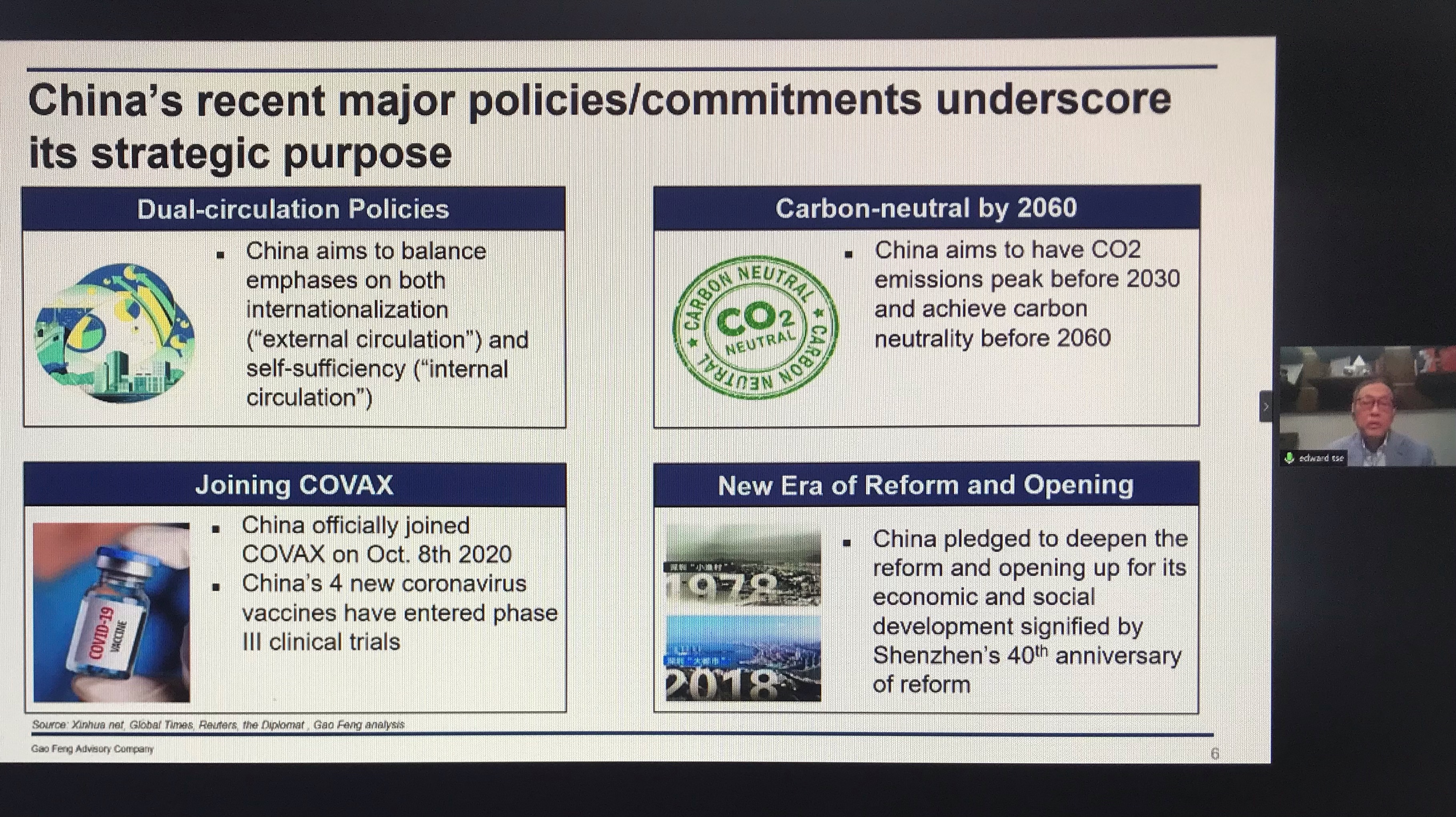China & the World: innovation, globalization & acceleration

Although continued recovery throughout 2020 has been uneven across sectors, The National Day Golden Week significantly helped to rejuvenate travel and tourism across the scenic parts of China including The Great Wall and Mount Tai

Emphasizing its strategic purpose to economic growth, the nation continues to adhere to multi-lateralism and globalization through its policies and commitments
On the final day of TFWA & CDFG’s virtual event last week, “China Reborn”, members of the expert panel discussed at length the future of the country’s international trade relations and its continued investment in technology, tourism and travel. Hosted by Michele Miranda, Conference Manager, TFWA, the webinar series reported more than 5,000 live stream connections. Looking at the bigger picture, the closing episode, “China and the World”, focused on the direct impact of the global economy on the duty free and travel retail industry and the country’s resilience and recovery. Having joined COVAX in early October, the nation’s four new vaccines have all entered phaseIII of clinical trials.
At the peak of the pandemic in China (Q1), the government implemented effective means of containment. Although continued recovery throughout 2020 has been uneven across sectors, The National Day Golden Week (first week of October) significantly helped to rejuvenate travel and tourism across the scenic parts of the country. According to Dr. Edward Tse, Founder, Gao Feng Advisory, China is accelerating its market reform, adopting a multi-lateral approach and opening key sectors: auto, energy, telecom and finance.
Described as on the cusp of entering a new era of tech-based innovation, using its nation-wide wireless internet and 5G network as a platform, disruptive technologies such as transmission of data, pattern recognition and blockchain infrastructure – accessible by Chinese businesses and entrepreneurs – continue to support its recovery and lead the future of the digital world. With the exponential growth of internet users in China over the last 20 years and comfort of both e-commerce and m-commerce business, the country will lend its acceleration and adaptation of new business models and strategies to other parts of the world. Keeping in mind its mission to create a more dynamic business ecosystem, government relations and representatives on all levels are promoting the building of start-up companies and emerging of entrepreneurs.
“While for the last dozen or so years China has led the innovation curve in a very significant manner, we are about to enter another phase where we’re going to see even more innovation for a longer duration and perhaps even having more impact on the rest of the world,” says Tse.
Emphasizing its strategic purpose to economic growth, the nation continues to adhere to multi-lateralism and globalization through its policies and commitments. At the core of “Globalization 2.0”: a dual circulation policy that aims to balance both internalization (external circulation) and self-sufficiency (internal circulation). In addition to the instituting of China’s different circulation policies (domestic vs. international), its signing of the regional trade agreement between ASEAN countries + Australia, New Zealand, China, Japan and Korea will shape trade flow over time in a new era of globalization. Known as Regional Comprehensive Economic Partnership (RCEP), the regional trade block will allow participants to become more economically dynamic and require the re-design of their manufacturing footprint and supply chain. Considering the emergence of Globalization of 2.0, as a result of the development of a middle-class and its increase of power consumption, China now serves as both a supply and demand center. Similar to The Belt and Road Initiative, a large-scale infrastructure project that will stretch from East Asia to Europe, the long-term success of RCEP will depend on the varying economic conditions and political tensions of those involved.
When asked to describe the implications of China’s dual circulation policy for international suppliers of premium brands, Tse noted that with measures to incentivize within the nation, domestic consumption and circulation will increase over time. Moving forward, international suppliers need to understand and cater to the habits, behaviors, trends and travel patterns of the Chinese consumer.
Setting the agenda for the future, China’s 14th five-year plan (FYP) lists its economic and social policies for 2021-2025. Based on innovation, urbanization, equal distribution of public services and wealth and sustainability, the FYP consists of the development of intelligent manufacturing, the expectation to become carbon-neutral by 2060 and the attempt to achieve China’s second centennial goal: to become a high-income country by 2049. According to Yang Yeo, Economist and Professor, National School of Development, Peking University, since the travel and tourism industry is one of the most wasteful to date, the nation’s sustainability strategy will promote greener growth as a new source of income and use domestic tourism via high speed rail as a starting point.










